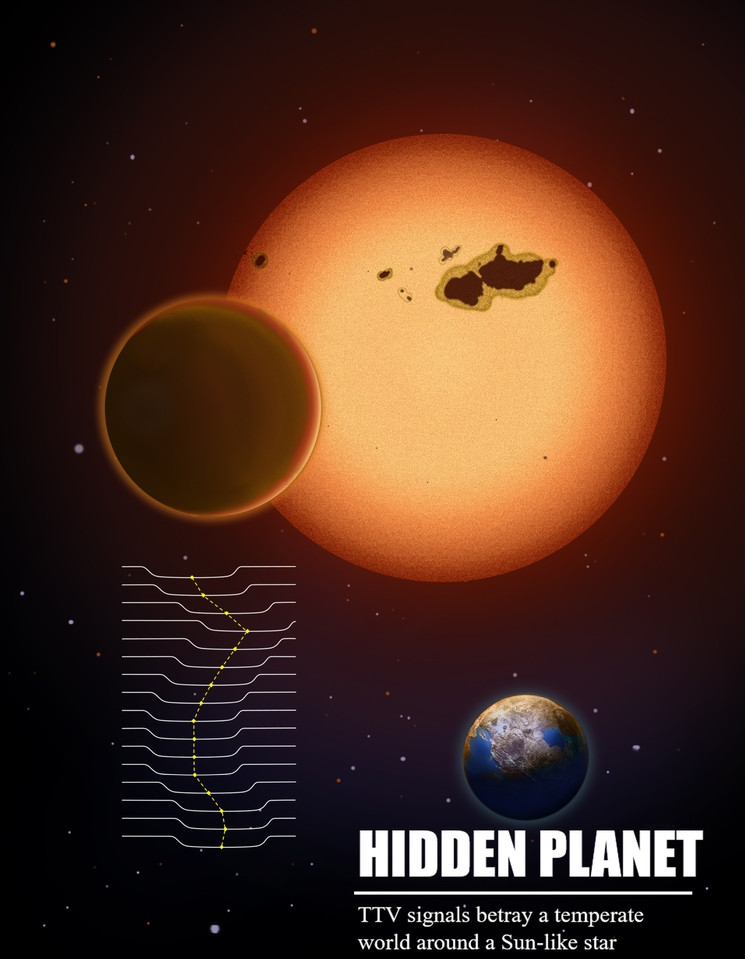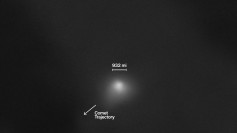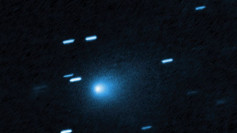An international team led by the Yunnan Observatories of the Chinese Academy of Sciences (CAS) has discovered a super-Earth, designated Kepler-725c, orbiting within the habitable zone of a Sun-like star. The planet, which is about ten times the mass of Earth, was identified using the Transit Timing Variation (TTV) technique-a method now demonstrating its potential to detect non-transiting, low-mass planets that may otherwise elude traditional detection strategies.
Published June 3 in Nature Astronomy, the study marks the first use of TTV to identify a super-Earth candidate in the habitable zone of a solar-type star. Kepler-725c orbits its host star, Kepler-725, a G9V-type Sun-like star located approximately 758 light-years from Earth, with an orbital period of 207.5 days and a semi-major axis of 0.674 AU. During part of its orbit, the planet lies within the star's habitable zone, raising prospects for surface temperatures that may allow liquid water to exist.
The host star, Kepler-725, is significantly younger than the Sun-about 1.6 billion years old-and exhibits more intense magnetic activity. The newly found planet receives roughly 1.4 times the solar radiation Earth receives. Its relatively Earth-like orbit duration and proximity to the habitable zone make it a prime candidate for further study in the search for Earth analogs.
Kepler-725c was detected indirectly by analyzing perturbations in the orbit of Kepler-725b, a gas giant in the same system. Researchers observed transit timing variations in Kepler-725b, which suggested gravitational tugs from an unseen companion. The data spanned approximately 1,470 days from NASA's Kepler Space Telescope and included 21 observed transits of Kepler-725b.
Unlike the transit and radial velocity methods, which are constrained by viewing angles and the need for extremely precise stellar motion measurements, the TTV technique identifies planets based on gravitational effects alone. It is especially suited for systems in which large outer planets exert measurable influence on inner companions, even when those planets do not transit their stars from Earth's perspective.
The researchers used detailed mathematical modeling to isolate the signal of Kepler-725c from other potential causes of timing variation. They evaluated both two-planet and three-planet models before concluding that the observed orbital anomalies were best explained by a single super-Earth in a 1:5 resonance with the gas giant-meaning Kepler-725b completes five orbits for every one orbit of Kepler-725c.
The success of this detection may have significant implications for upcoming space missions such as the European Space Agency's PLATO mission and China's Earth 2.0 mission, both of which aim to find Earth-like planets around Sun-like stars. The TTV technique could dramatically increase the likelihood of finding long-period, habitable-zone planets that do not transit.
Although Kepler-725c is considered a super-Earth, with a mass approximately ten times that of our planet, its actual composition remains unknown. It could represent a rocky terrestrial planet, a gas-rich mini-Neptune, or even a Hycean world-a hypothesized class of water-covered planets with hydrogen-rich atmospheres.
The discovery involved researchers from Hamburg Observatory in Germany, Xi'an Jiaotong-Liverpool University, and the Nanjing Institute of Astronomical Optics and Technology. The project was supported by the National Natural Science Foundation of China and the Yunnan Fundamental Research Project.





